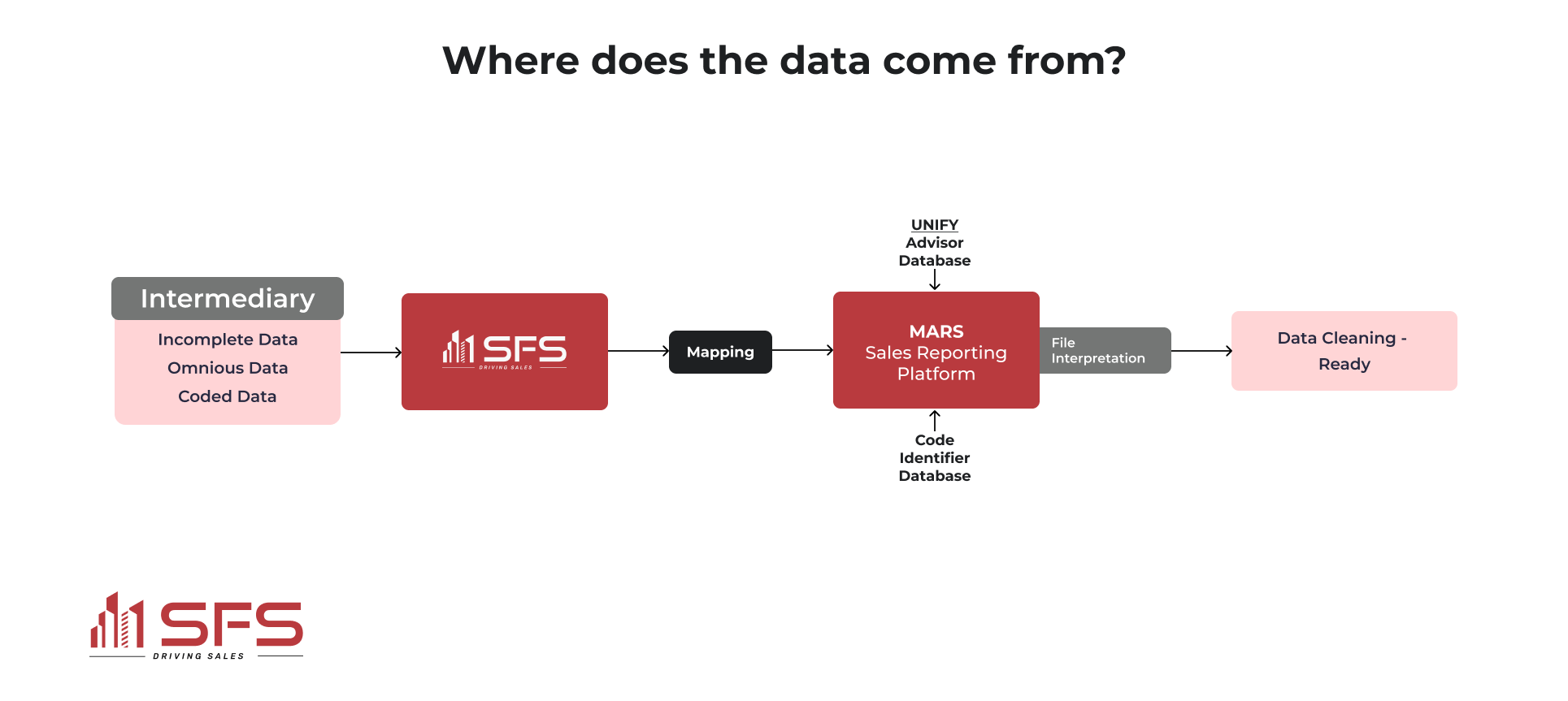The process of acquiring and preparing sales data from intermediaries for data cleaning and sales reporting begins with establishing contact with these intermediaries to obtain the necessary data files. This initial step is crucial for clients who wish to gain deeper insights into their sales transactions, beyond the surface-level information provided by entities like Fidelity. For example, a client interested in understanding the specifics of transactions within an omnibus account would need to identify the individual executing firms or advisors behind each transaction, rather than just seeing “Fidelity” as the sole entity involved.
To accomplish this, the client’s sales reporting provider requests the intermediary to send the raw data files on the client’s behalf. This involves setting up a data transmission arrangement where the intermediary agrees to send the raw data directly to the servers of the sales reporting partner. These files are often in a format that is not immediately usable (e.g., a TIP file requiring specific formatting knowledge to interpret) and thus need to be mapped into the sales reporting partner’s system for further processing.
The goal is to transform this raw data into a format that allows for easy extraction and analysis. This is achieved by loading the data into a specialized sales reporting platform (the “MARS” platform in this example) that can interpret the raw files and prepare them for the subsequent steps of data cleaning and sales reporting. This system identifies detailed information about the transactions, such as the advisor or firm involved, the type of transaction, and other relevant details that are not apparent in the aggregated data provided by the clearinghouse or platform.
Additionally, the process involves the sales reporting platform decoding various identifiers used by the intermediary, such as Fidelity’s “G numbers,” which are unique to each firm or advisor. By referencing these codes against a database that contains a comprehensive list of these identifiers, the sales reporting provider attributes each transaction to the correct firm or advisor. This step is essential for providing clients with the detailed insights they require, including the ability to aggregate transactions by advisor and analyze patterns or trends in the data.
”The goal is to transform this raw data into a format that allows for easy extraction and analysis.
This preparatory phase precedes the critical tasks of data cleaning and sales reporting, setting the foundation for accurate and insightful analysis of sales data. It involves a series of coordinated efforts to collect, map and interpret raw transaction data, ensuring that clients can access the detailed information they need to make informed decisions based on complete and accurate data.
In part 2, we will discuss the data cleaning process, essential for the sales reporting insights that will inform sales strategy and drive future growth.




